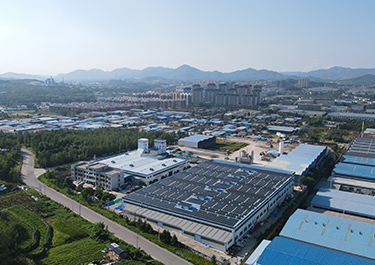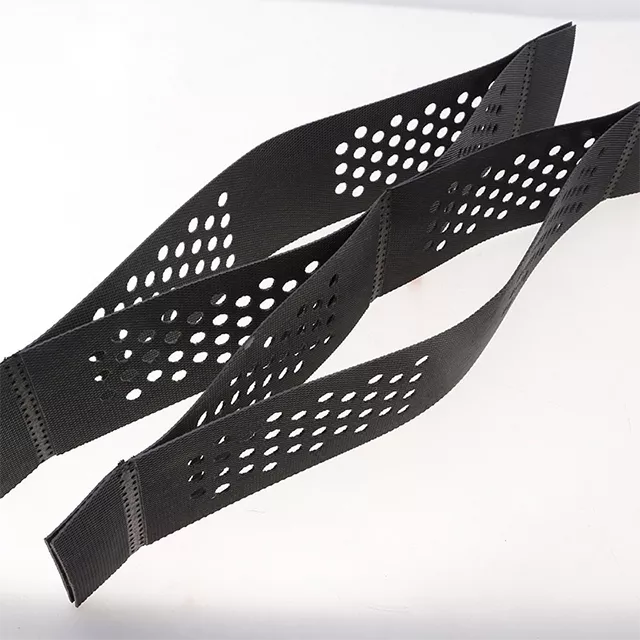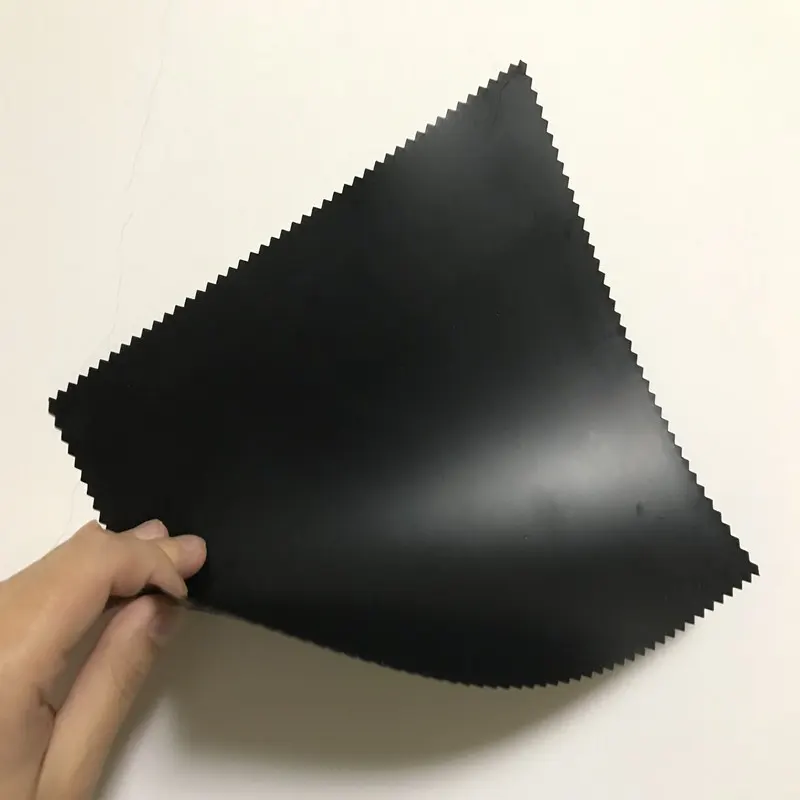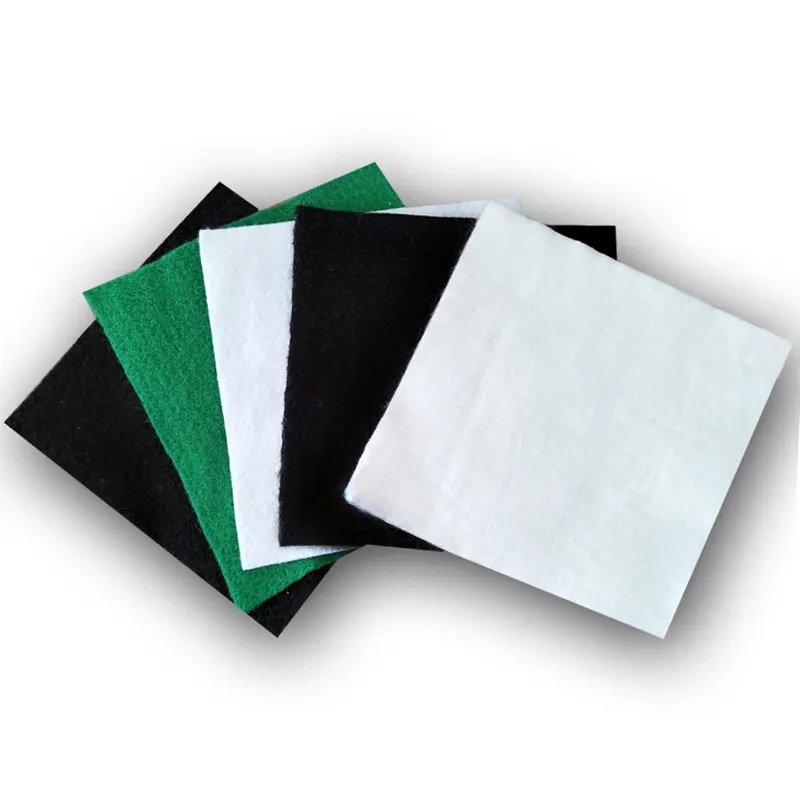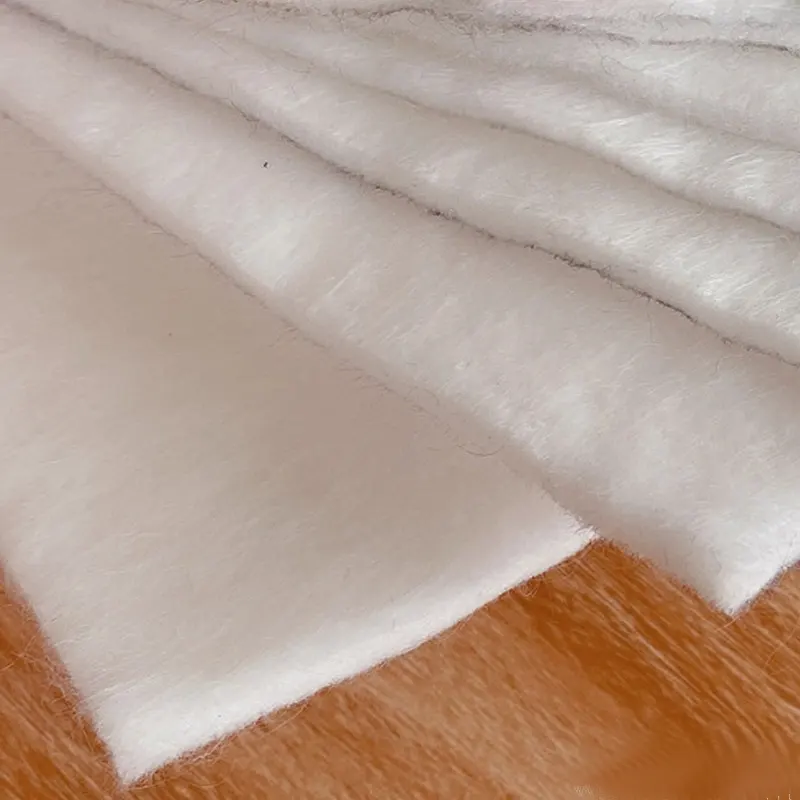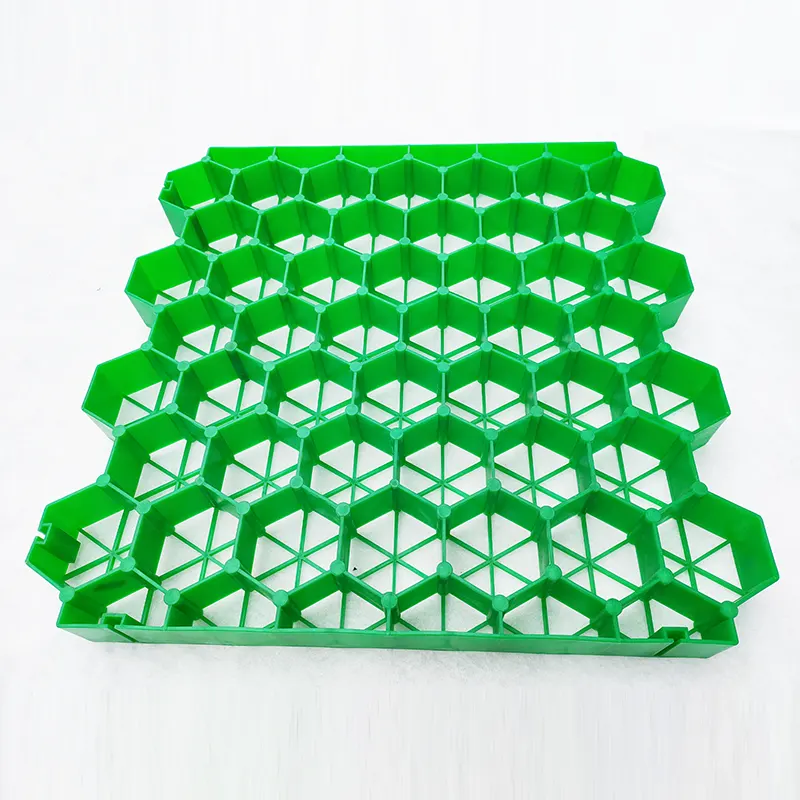Solutions to extend the service life of geocells
The service life of geocells has always been a primary consideration in slope greening projects and geological hazard mitigation solutions, primarily for project safety and future replacement costs. Therefore, extending the service life of geocell technology has become a key focus. To address this very practical and important engineering issue, our Lianxiang Geotechnical Department has developed a detailed technical solution. Improving the service life of geocells requires addressing six key aspects: material selection, design optimization, environmental conditions, construction control, specific project loads, and ongoing maintenance. Let's discuss these in detail.
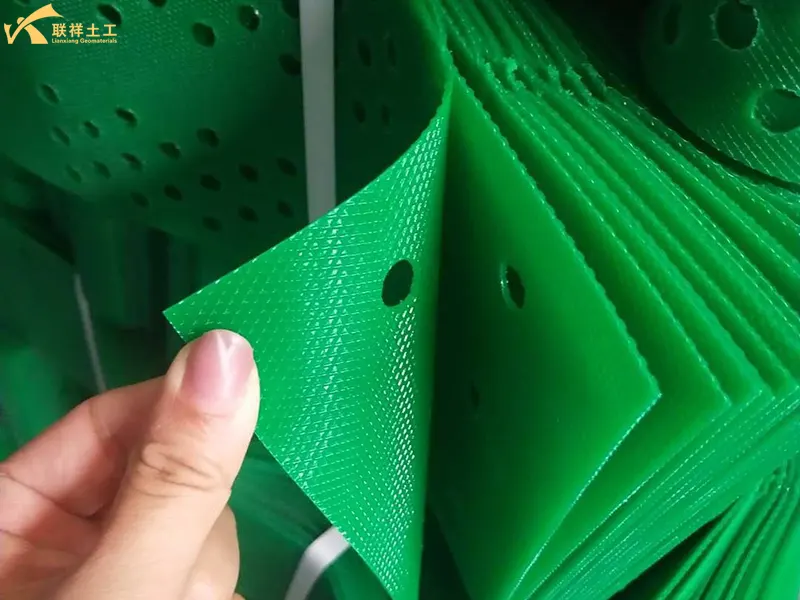
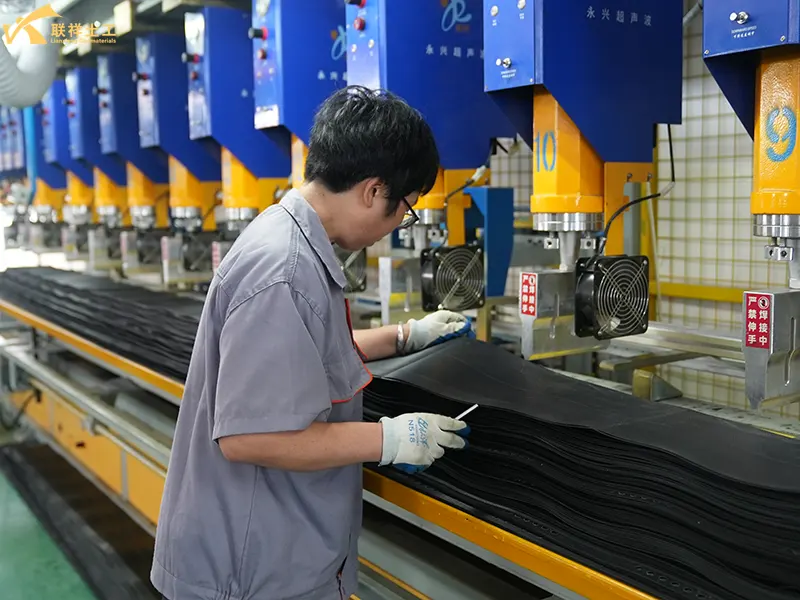
1. Source Control: Optimizing High-Performance Materials
The nature of a material determines its resistance to aging, corrosion, and creep, which is the foundation for extending its service life.
1.1. Polymer Raw Materials and Anti-Aging Agents:
- High-Density Polyethylene (HDPE): Pure HDPE cells are preferred over recycled materials. HDPE offers excellent chemical resistance, impact resistance, and low creep.
- Polypropylene (PP): High strength, but slightly less brittle at low temperatures, so the choice should be tailored to the project environment.
- PVC (polyvinyl chloride): Low cost but poor aging resistance. Long-term exposure easily decomposes plasticizers, causing the material to become hard and brittle, resulting in a lifespan of typically less than 10 years.
1.2. Modification Level
- Antioxidants/Antioxidant Synergists: Inhibit oxidative degradation and reduce molecular chain breakage at high temperatures.
- Light Stabilizers (such as hindered amines, HALS): Absorb or block UV rays to prevent UV-induced embrittlement and strength loss (a must-have modification for outdoor projects, which can extend the lifespan by over 50%).
- Corrosion Inhibitors: For applications in saline-alkali land and industrially polluted areas, acid- and alkali-resistant ingredients are added to prevent chemical attack.
1.3. Weld Strength:
- Advanced processes such as ultrasonic or laser welding are used to ensure high and consistent weld strength. Weld strength should be at least 80% of the parent material strength to prevent overall cell failure due to weld cracking. Thickness and Strength: The thicker the cell sheet (usually 2-5mm), the higher its tensile strength (≥15MPa) and tear strength, the greater its resistance to wear and damage, and the less likely it is to crack due to localized stress concentration.
1.4. Material Certification:
- Suppliers are required to provide test reports on key indicators such as environmental stress cracking resistance, oxidation induction time (OIT), and carbon black content to ensure that the materials comply with relevant national or industry standards (such as GB/T, ASTM, etc.).
2. Scientific Design: Optimizing Structural and Environmental Compatibility
A reasonable design can maximize the performance of geocells and minimize their exposure to adverse factors.
2.1. Structural Design:
- Rational Selection: Select the appropriate cell height, weld distance, and sheet thickness based on the load and foundation conditions. For critical projects with heavy loads or steep slopes, use taller and thicker specifications.
- Drainage Design: This is a crucial step. A comprehensive drainage system (such as blind drains, permeable pipes, and a gravel bedding layer) must be designed within and beneath the cell system to prevent water accumulation within the cells. Water accumulation can soften the foundation and, in freeze-thaw areas, generate frost heave forces, significantly compromising structural stability and accelerating material degradation.
- Cover Thickness: Ensure sufficient cover thickness of backfill material above the cells. This not only distributes the load but also provides the most effective and economical shielding against UV rays.
- Geotextile Application: Appropriate geotextiles should be laid above and below the cells to provide isolation, filtration, reinforcement, and protection. The lower geotextile prevents base soil particles from intruding into the cell space, maintaining friction; the upper geotextile prevents overburden loss.
2.2. Environmental Compatibility:
- Chemical Environment: If the project site is exposed to contaminated soil or acidic or alkaline groundwater, a more chemically resistant HDPE material should be selected, along with specialized corrosion protection.
- Biological Environment: For areas where microorganisms or rodents may be present, while polymer materials are inherently resistant to decay, necessary protective measures should be considered during design.
3. Environmental Conditions: "External Factors" That Accelerate or Delay Aging
Geocells are often exposed outdoors or buried in soil/water. Climate, chemical, and biological factors in the environment can continuously erode the material, shortening its actual lifespan:
3.1. Climate and Environmental Factors
- Ultraviolet (UV) Radiation: In outdoor projects, solar UV radiation (especially UV-B/C radiation between 290-400nm) is the primary factor contributing to the aging of polymer materials. It destroys the molecular chain structure, causing the material to gradually lose elasticity and become brittle and crack. (For example, unprotected PP cells will show significant embrittlement within 1-2 years in the strong UV-rich region of the Qinghai-Tibet Plateau.)
- Temperature Fluctuations: Extremely high temperatures (≥60°C) accelerate thermal oxidative aging, while low temperatures (≤-20°C) reduce material toughness. Repeated freeze-thaw cycles can cause stress at the cell-soil interface, leading to fatigue cracking of the sheet.
- Humidity and Moisture: Prolonged humid or waterlogged environments (such as areas with high groundwater levels or frequent rainfall) can accelerate material hydrolysis (especially PP materials). If the water contains dissolved oxygen, it can also cause oxidative corrosion.
3.2. Chemical Environmental Factors
Chemical substances in the soil or water can corrode geocells:
- Acid-Base Corrosion: Saline-alkali soils (pH > 8.5), acidic soils (pH < 5.5), or areas where industrial wastewater infiltrates can break down polymer molecular chains, causing the material to soften and lose strength (for example, HDPE in saline-alkali soils with a pH of 12 can lose up to 20% of its strength over five years).
- Ionic Attack: Strong oxidizing ions such as Cl⁻ and SO₄²⁻ in the soil can damage the anti-aging coating (if present) on the surface of the material and accelerate internal degradation.
3.3. Bio-Environmental Factors
- Microbial Degradation: Bacteria and fungi in the soil can decompose polymer materials (especially unmodified PP), forming microscopic pores and reducing structural integrity.
- Plant Root Damage: In slope protection projects, weed or shrub roots can penetrate the geocell sheets, causing localized cracking and even soil loss.
4. Precision Construction: Ensuring Project Quality
"30% materials, 70% construction." Improper construction is the main cause of premature failure of geocells.
4.1. Site Leveling and Compaction:
- The foundation must be level and compacted, free of sharp protrusions (such as tree roots or rocks) that could pierce the base of the cells under load. The degree of compaction must meet design requirements to prevent uneven settlement.
4.2. Cell Laying and Tensioning:
- Fully Tensioned: After laying, the cells must be fully and evenly tensioned to the designed dimensions using specialized anchors (such as U-shaped nails or J-shaped nails) to form a cohesive tension network. Insufficient tensioning will significantly weaken its reinforcement and restraint capabilities.
- Secure Connections: Cells from different volumes should be securely connected using specialized connectors to form a single unit.
4.3. Backfilling:
- Backfill Materials: Well-graded gravel or sandy soil with a high internal friction angle and good permeability should be used. Avoid using fine-grained soils such as clay, as they have poor drainage and are susceptible to frost heave.
- Backfill Method: Start from one end of the cell and work your way toward the other. Use a manual, then mechanical method: First, use small equipment or manual labor to fill the cell to 1/3 to 1/2 of its height. Then, use light machinery to spread and compact from the side. Construction machinery is strictly prohibited from driving or rolling directly over incompletely backfilled cells, as this can cause the cell sheets to tear and welds to separate.
- Compaction Method: Use a light vibratory roller or plate compactor for compaction. The compaction direction should be parallel to the cell laying direction to avoid "twisting" within the cell. Compaction levels must be tested layer by layer to ensure compliance.
5. Loading Conditions: "Use Intensity" Determines Lifespan
The core function of geocells is to withstand and distribute upper loads. The magnitude, type, and duration of the loads directly impact their fatigue life:
5.1. Static Load Overload
- If the roadbed fill height or heaped load exceeds the design values (e.g., the actual fill height is 30% higher than the design), the cells will be subjected to prolonged high stress, accelerating material creep (the slow deformation of polymer materials) and leading to structural instability.
5.2. Dynamic Load Fatigue
- In traffic engineering, dynamic loads generated by repeated vehicle overrun (especially heavy trucks) can cause fatigue damage to the cells. If traffic volume (e.g., average daily truck traffic >500) far exceeds design expectations, fatigue damage can accumulate rapidly, leading to sheet cracking. (For example, the fatigue life of geocells in highway roadbeds is generally inversely proportional to traffic volume.)
5.3. Uneven Loading
- During soft soil foundation treatment, if the foundation settlement is uneven (differential settlement > 2 cm/m), the cells can distort and deform, causing local tensile stresses to exceed their ultimate strength and leading to damage.
6. Lifecycle Management and Maintenance
Post-completion maintenance is equally important.
6.1. Completion Acceptance:
- Strictly inspect the tension level of the cells, backfill quality, compaction, and drainage system.
6.2. Regular Inspections:
- Especially during the initial operation period and after extreme weather such as heavy rain or earthquakes, inspect the slope or roadbed for signs of uneven settlement, cracks, and erosion.
6.3. Timely Maintenance:
- If the cover soil layer is found to be thinning due to erosion, replenish it promptly to ensure UV protection.
- Clean drainage ditches and blind drains to ensure the drainage system remains effective.
- Local damage may be repaired or replaced.
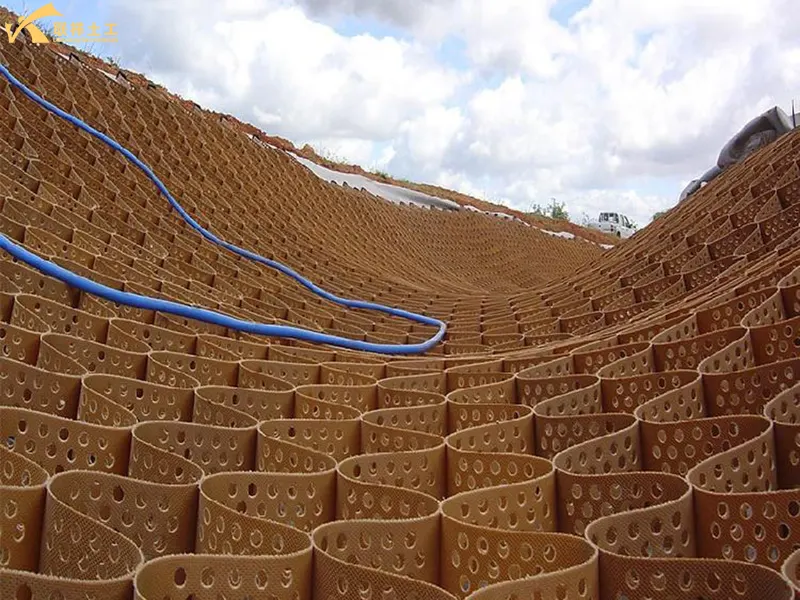
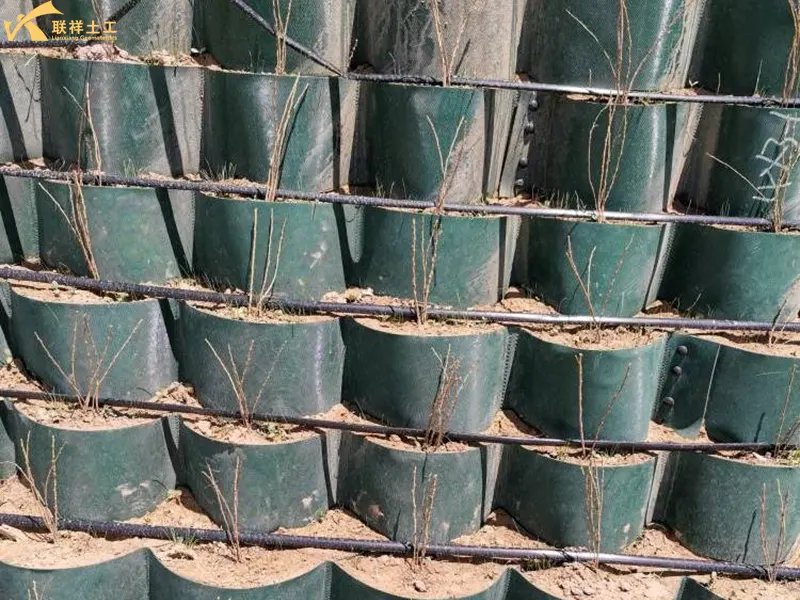
7. Conclusion
To maximize the service life of geocells, the following core principles must be adhered to:
- Material is the foundation: Select high-quality, aging-resistant HDPE.
- Drainage is the key: A comprehensive internal and external drainage design is the lifeline for the long-term stability of the structure.
- Construction is the guarantee: Meticulous construction, especially adequate tensioning and standardized backfill and compaction, ensures optimal performance.
- Maintenance is the supplement: Regular inspection and maintenance can prevent minor problems before they become major ones.
Through comprehensive measures at these four levels, the safe and stable operation of geocell projects can be ensured over a design life of 30 or even 50 years.
8. Related Questions and Answers:
8.1. Which raw material is best for producing geocells?
A: There is no single "best raw material" for producing geocells. Instead, the selection must be based on a comprehensive consideration of the project's requirements (such as bearing strength, environmental resistance, service life, and cost budget). Currently, the mainstream raw materials with mature performance in the industry are mainly divided into high-molecular polymers (dominant) and specialty modified materials (supplemented for specific scenarios). Polyethylene (PE) and polypropylene (PP) are the two most widely used and cost-effective core materials.
8.2. What is the typical lifespan of a geocell?
A: The design lifespan of a geocell is typically 20 to 50 years, but the actual service life is generally between 15 and 30 years, depending primarily on the material type, environmental conditions, and construction and maintenance level.
8.3. Can geocells be harmlessly degraded?
A: Whether a geocell can be harmlessly degraded depends on its material type. Some geocells made of traditional materials are difficult to degrade harmlessly, while geocells made of some new biodegradable materials can.
8.4. Do geocells require maintenance after construction?
A: After construction, geocells require maintenance and repair. The frequency and content of this maintenance should be determined based on a comprehensive assessment of the material's properties (e.g., biodegradable/non-biodegradable), the project scenario (e.g., roadbed reinforcement/slope protection), and environmental conditions (e.g., open-air/underground, corrosive/non-corrosive). The core objective is to ensure that the geocells continue to perform their functions of reinforcement, soil consolidation, and anti-seepage throughout their designed service life, preventing local damage from causing overall project failure.
9. Reasons to Choose Lianxiang Geocells
Lianxiang Geotechnical has been engaged in the research, development, production, and sales of geotechnical materials for many years. We have extensive experience in the production and use of geocells. We provide clients with customized product solutions tailored to their specific needs and application environments. From initial product model selection to on-site construction, Lianxiang Geotechnical will dispatch professional personnel to coordinate and ensure the smooth completion of projects and achieve their intended goals. The company has made outstanding contributions to anti-seepage projects, roadbed and pavement reinforcement, filtration and drainage, flood control, and slope greening projects for highways, high-speed railways, scenic lakes, biogas tanks, ports, dams, docks, and revetments around the world. Its products have received unanimous praise from users. Choosing Lianxiang is a trustworthy choice.
Written by
SHANDONG LIANXIANG ENGINEERING MATERIALS CO., LTD.
Kyle Fan
WhatsApp:+86 139 5480 7766
Email:admin@lianxiangcn.com
Contact
-
WhatsApp
-
E-MailE-Mail:admin@lianxiangcn.com
-
WeChatWeChat:18554180188

